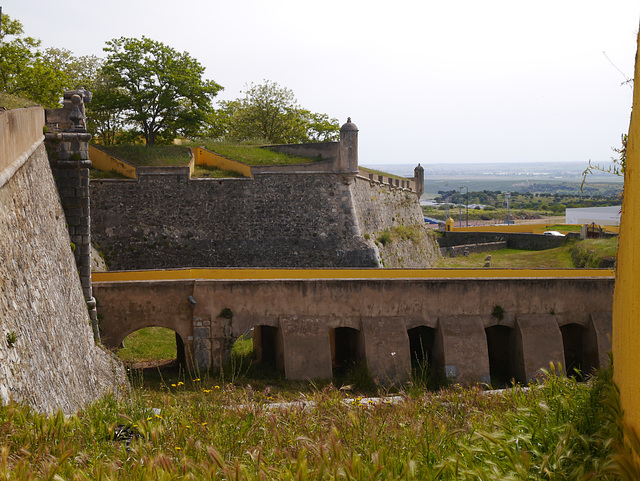Elvas Intra-muros
Elégance
HFF
Elvas - War I
Elvas - War II
Vidago
Igreja da Senhora do Cerro
Light
Forte da Graça - PIP please
HFF - Forte da Graça V
Forte da Graça IV
Center dome - the two reminder PIPs
Ourém
War III
Arrival
HFF - Rio Arade
Guincho
Jewish Quarter
Ourém - The garden of Eden
People
Jewish quarter II
Sun
HFF
Want to talk ?
Eagles fly
I am the power , now. . . PIP, please
Mother ship - kitchen PIP please.
His Magesty the Dory in all of its 5.3 meters leng…
Envy !
HFF
Santo André and he, himself . . .
Santo André
High up, no Castelo dos Mouros.
Chalet Biester
I will
To believe
HFF - The drums are here
Castelo dos Mouros e Pena
The Village looks on . . .
Joy !
Warm day to you, hear the bells !!!
Soon if you PIP, you will recognise me . . .
Aqueduto de Elvas - PIP
HFF - Forte da Graça
View from de Moors Castle - Sintra
See also...
Keywords
Authorizations, license
-
Visible by: Everyone -
All rights reserved
-
303 visits
Elvas - Porta Sul


Elvas is among the finest examples of intensive usage of the trace italienne (star fort) in military architecture, and has been a World Heritage Site since 30 June 2012. The inscribed site name is Garrison Border Town of Elvas and its Fortifications.It was wrested from the Moors by Afonso I of Portugal in 1166 but was temporarily recaptured before its final occupation by the Portuguese in 1226. The late Gothic Our Lady of the Assumption Cathedral, which has many traces of Moorish influence in its architecture, dates from the reign of Manuel I of Portugal (1495–1521).
Junot took it in March 1808 during the Peninsular War, but evacuated it in August after the conclusion of the Convention of Sintra. The fortress of Campo Maior 15 kilometres (9.3 mi) to the northeast is known for its Napoleonic era siege by the French and relief by the British under Marshal Beresford in 1811, an exploit commemorated in a ballad by Sir Walter Scott.
Junot took it in March 1808 during the Peninsular War, but evacuated it in August after the conclusion of the Convention of Sintra. The fortress of Campo Maior 15 kilometres (9.3 mi) to the northeast is known for its Napoleonic era siege by the French and relief by the British under Marshal Beresford in 1811, an exploit commemorated in a ballad by Sir Walter Scott.
Dimas Sequeira, ROL/Photo, Adriana Grecu, ColRam and 12 other people have particularly liked this photo
- Keyboard shortcuts:
Jump to top
RSS feed- Latest comments - Subscribe to the comment feeds of this photo
- ipernity © 2007-2025
- Help & Contact
|
Club news
|
About ipernity
|
History |
ipernity Club & Prices |
Guide of good conduct
Donate | Group guidelines | Privacy policy | Terms of use | Statutes | In memoria -
Facebook
Twitter

Admired in:
www.ipernity.com/group/tolerance
Obrigada pela explicação muito elucidativa, Zé
Cheers, Herb
Thank you for posting in the group
www.ipernity.com/group/magicalsunlight
le même type de fortification..
chez nous ce sont des fortifications militaires à la **Vauban**
fr.wikipedia.org/wiki/Fortifications_et_constructions_de_Vauban
J. Gafarot club has replied to ROL/Photo clubDans le Nord il y a quelque chose de semblable fait par un disciple de Vauban.
Sign-in to write a comment.